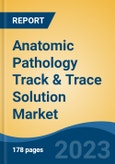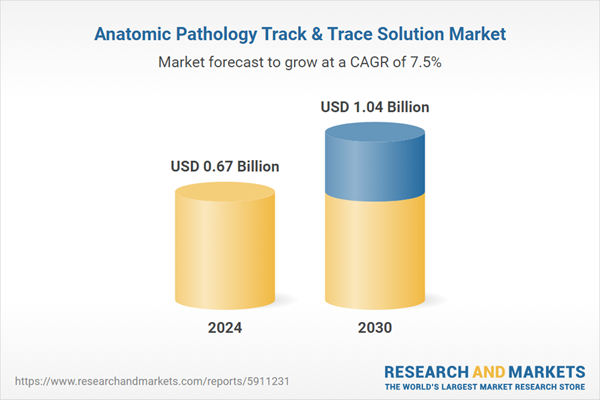Speak directly to the analyst to clarify any post sales queries you may have.
10% Free customizationThis report comes with 10% free customization, enabling you to add data that meets your specific business needs.
Key Market Drivers
Rising Demand for Precise Diagnostics
In the ever-advancing realm of healthcare, precision and accuracy in diagnostics are pivotal. Accurate and timely diagnosis not only ensures better patient outcomes but also drives the development of effective treatment plans. The Global Anatomic Pathology Track & Trace Solution Market has emerged as an indispensable player in enhancing the precision of diagnostic processes, and its growth is significantly bolstered by the escalating demand for precise diagnostics.Key Market Challenges
Data Privacy and Security
In today’s digital age, data privacy and security have become paramount concerns, particularly in healthcare environments. The collection, storage, and transfer of sensitive patient information through track and trace solutions present significant risks if not managed correctly. These solutions gather various forms of data, including personal health records, diagnostic results, and treatment histories, all of which must be protected to ensure patient confidentiality. Healthcare institutions are held to stringent regulations, such as HIPAA (Health Insurance Portability and Accountability Act) in the U.S. or GDPR (General Data Protection Regulation) in Europe, that mandate the safeguarding of patient data.Key Market Trends
Blockchain for Enhanced Security
In the healthcare sector, where data security and privacy are of utmost importance, blockchain technology presents a promising solution to safeguard sensitive patient and diagnostic information. Blockchain’s decentralized ledger system provides a high level of security by ensuring that once data is recorded, it cannot be altered or tampered with. This makes blockchain an ideal candidate for enhancing track and trace systems, especially for handling medical records, test results, and specimen data. By leveraging blockchain, healthcare institutions can ensure that all diagnostic data remains authentic and immutable, effectively preventing fraud and reducing the risk of data breaches.Key Market Players
- Leica Biosystems Nussloch GmbH
- Thermo Fisher Scientific Inc
- Zebra Technologies Corp.
- Agilent Technologies Inc
- CompuGroup Medical
- LigoLab Information Systems
- General Data Healthcare Inc.
- Psychē Systems Corporation
- Siemens Healthineers AG
- Indica Labs, LLC
Report Scope:
In this report, the Global Anatomic Pathology Track & Trace Solution Market has been segmented into the following categories, in addition to the industry trends which have also been detailed below:Anatomic Pathology Track & Trace Solution Market, By Application:
- Slides Tracking
- Specimen Tracking
- Tissue Cassettes & Blocks Tracking
Anatomic Pathology Track & Trace Solution Market, By End User:
- Hospital Laboratories
- Independent & Reference Laboratories
- Others
Anatomic Pathology Track & Trace Solution Market, By Region:
- North America
- United States
- Canada
- Mexico
- Europe
- Germany
- United Kingdom
- France
- Italy
- Spain
- Asia-Pacific
- China
- Japan
- India
- Australia
- South Korea
- South America
- Brazil
- Argentina
- Colombia
- Middle East & Africa
- South Africa
- Saudi Arabia
- UAE
Competitive Landscape
Company Profiles: Detailed analysis of the major companies present in the Global Anatomic Pathology Track & Trace Solution Market.Available Customizations:
With the given market data, the publisher offers customizations according to a company's specific needs. The following customization options are available for the report.Company Information
- Detailed analysis and profiling of additional market players (up to five).
This product will be delivered within 1-3 business days.
Table of Contents
Companies Mentioned
- Leica Biosystems Nussloch GmbH
- Thermo Fisher Scientific Inc
- Zebra Technologies Corp.
- Agilent Technologies Inc
- CompuGroup Medical
- LigoLab Information Systems
- General Data Healthcare Inc.
- Psychē Systems Corporation
- Siemens Healthineers AG
- Indica Labs, LLC
Table Information
| Report Attribute | Details |
|---|---|
| No. of Pages | 180 |
| Published | February 2025 |
| Forecast Period | 2024 - 2030 |
| Estimated Market Value ( USD | $ 0.67 Billion |
| Forecasted Market Value ( USD | $ 1.04 Billion |
| Compound Annual Growth Rate | 7.4% |
| Regions Covered | Global |
| No. of Companies Mentioned | 10 |









